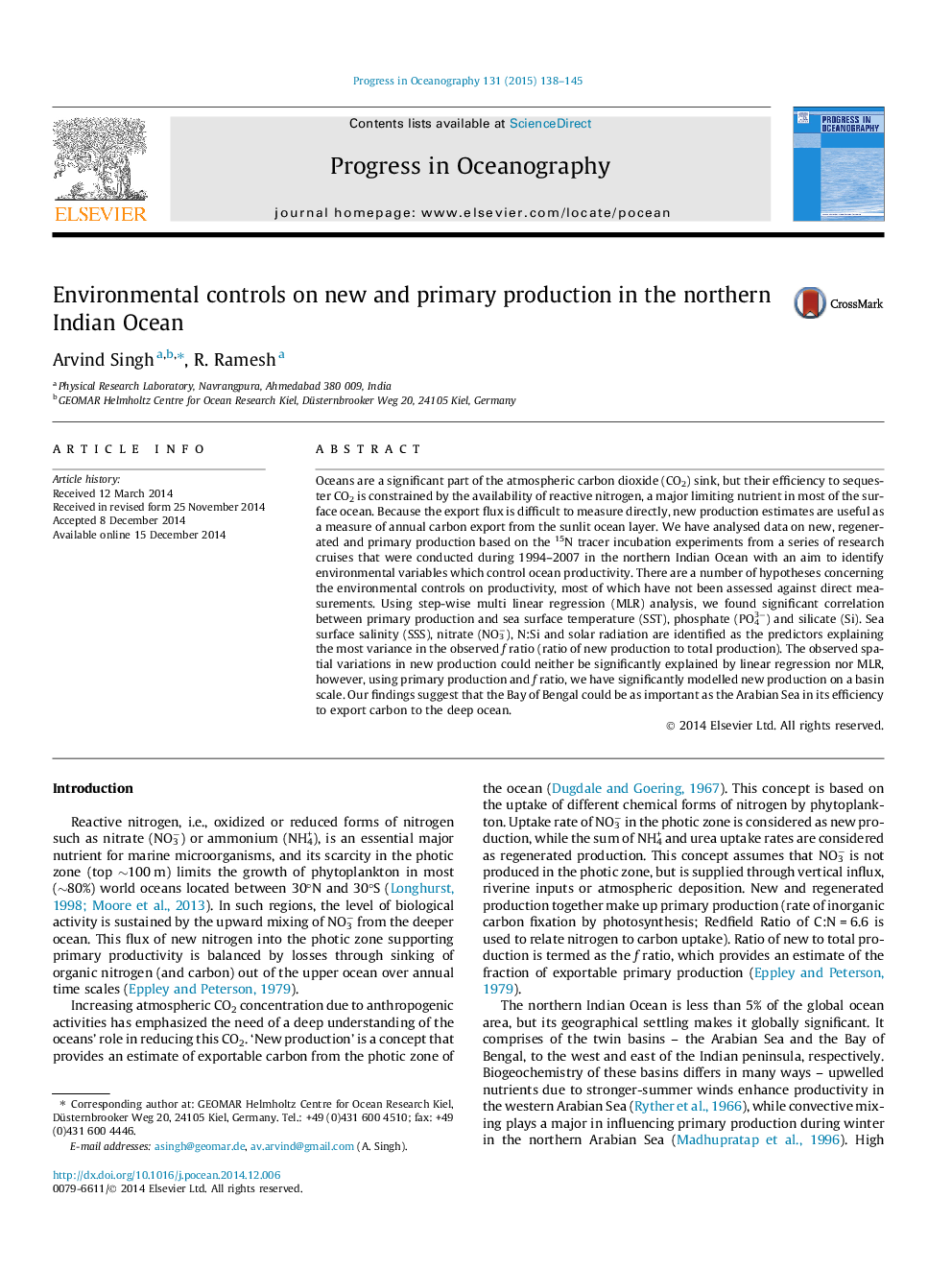| Article ID | Journal | Published Year | Pages | File Type |
|---|---|---|---|---|
| 6388508 | Progress in Oceanography | 2015 | 8 Pages |
â¢New production in the Arabian Sea is comparable to that in the Bay of Bengal.â¢Primary production is moderate in the Bay of Bengal.â¢The western Arabian Sea is the most productive part of the northern Indian Ocean.â¢Salinity, NO3-, N:Si and solar radiation explained 51% variation in the f ratio.
Oceans are a significant part of the atmospheric carbon dioxide (CO2) sink, but their efficiency to sequester CO2 is constrained by the availability of reactive nitrogen, a major limiting nutrient in most of the surface ocean. Because the export flux is difficult to measure directly, new production estimates are useful as a measure of annual carbon export from the sunlit ocean layer. We have analysed data on new, regenerated and primary production based on the 15N tracer incubation experiments from a series of research cruises that were conducted during 1994-2007 in the northern Indian Ocean with an aim to identify environmental variables which control ocean productivity. There are a number of hypotheses concerning the environmental controls on productivity, most of which have not been assessed against direct measurements. Using step-wise multi linear regression (MLR) analysis, we found significant correlation between primary production and sea surface temperature (SST), phosphate (PO43â) and silicate (Si). Sea surface salinity (SSS), nitrate (NO3â), N:Si and solar radiation are identified as the predictors explaining the most variance in the observed f ratio (ratio of new production to total production). The observed spatial variations in new production could neither be significantly explained by linear regression nor MLR, however, using primary production and f ratio, we have significantly modelled new production on a basin scale. Our findings suggest that the Bay of Bengal could be as important as the Arabian Sea in its efficiency to export carbon to the deep ocean.
